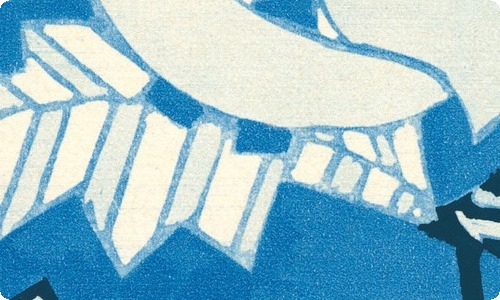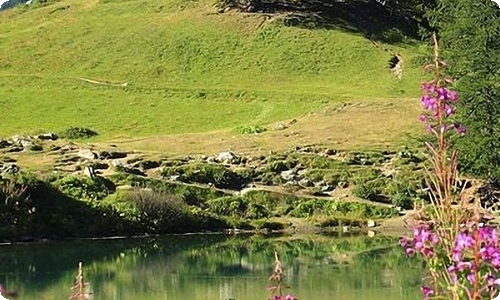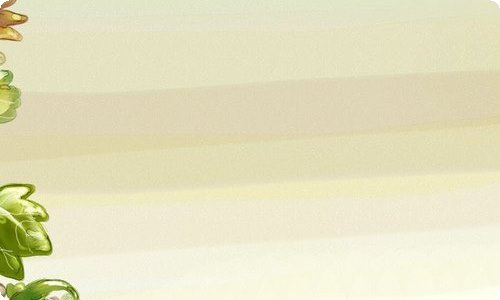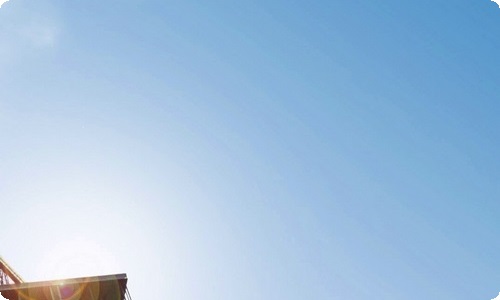-学年高二上学期期末考试英语试卷
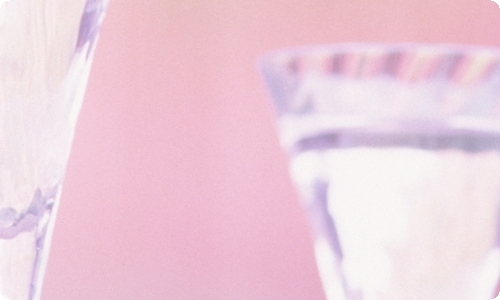
2018-2019学年高二上学期期末考试英语试卷
一、阅读理解
Snorkelling in Silfra
The clear water at this UNESCO world heritage(遗产) site in Thingvellir National Park will leave you speechless. It is one of the highest rated dive sites in the world. During this journey, you will snorkel within a crack between the Eurasian and American continents. You’ll experience truly amazing views of the colorful underwater landscape, marine life(海洋生物), and geological formations. Silfra’s water is fresh and drinkable at around 2°C -- 4°C all year round. Visibility can reach more than 100 meters, and swimming often feels more like flying.
This trip is for anyone who knows how to swim and is up for a unique adventure. We offer transportation with a pick-up in Reykjavik, and provide you with a dry suit. The total length of the tour is approximately five hours, and includes in-water snorkelling lasting around 30 minutes. We’ll guide you through the main Silfra Big Crack, Silfra Hall, Silfra Cathedral and Silfra Lagoon.
Included:
★ All necessary snorkeling equipment;
★ Hot drinks and food;
★ Silfra entrance fee of 1,000 ISK.
Availability: All year at 09:00 and 15:00. Pick-up in one hour before.
Requirements:
Participants need to complete the Silfra medical statement before the tour.
Divers must:
★ Be at least 18 years old (young people under 18 years old need a signature from their legal guardian), and the maximum age is 65 years old;
★ Be able to communicate in English.
★ Be physically fit;
★ Not be pregnant;
★ Not be under the influence of alcohol or drugs;
★ Sign a medical form.
1.What will be offered to you if you take this trip
A. Cold drinks. B. Two dry suits.
C. Round-trip air tickets. D. Equipment for snorkeling.
2.When is the earliest pick-up time every day
A. 07:00. B. 08:00.
C. 09:00. D. 14:00.
3.To participate in the trip, one must ____.
A. be over 18 years old. B. be under 66 years old.
C. have the support of parents. D. have a high level of ability in English.
In 1996, someone found some very old clothes in an old mine in Nevada, USA; they included a pair of dirty old jeans. Today, those jeans are very valuable, and they are now in the Levi Strauss Archival Collection in San Francisco. The jeans, which are over 120 years old, are the oldest pair of Levi’s 501 jeans in the world.
They are almost the same as a modern pair of 501’s; there are just some small differences in the detail. For instance, today’s 501’s have two back pockets, while the old pair just has one.
In 1853, a young tailor from Germany, called Levi Strauss, began working in San Francisco; Levi sold thick canvas(帆布) to miners; the miners used the canvas to make tents.
One day, a miner told Levi that he could not find trousers that were strong enough for work in the gold mines. Levi decided to make some trousers out of canvas. Very soon, he sold all the canvas trousers he had made! They were just what miners wanted.
However, the canvas was rather heavy and stiff(坚硬的). Levi therefore began to look for a different textile(织物). Soon he found a heavy textile from France; it was denim(斜纹粗棉布). Denim was a bit lighter than canvas, but is was very strong. It was ideal for miners.
However, original denim was almost white, and miners did not like the color! Their denim trousers got dirty as soon as they began working! Levi Strauss therefore decided to use colored denim, and he chose dark blue. In 1873, he began to make denim trousers with metal rivets(铆钉) to make them stronger. “Blue jeans” arrived!
Levi’s jeans were so popular that his company got bigger and bigger. Soon, other firms were making blue jeans too. Miners liked them, but so did cowboys and other working men. Blue jeans became classic American working trousers. After the Second World War, jeans became popular all over the world. Today, blue jeans are made all over the world.
1.What are the old jeans found in Nevada like
A. They are very heavy. B. They have unique and valuable decorations.
C. They are very much like modern jeans. D. They have two black pockets.
2.How were Levi’s canvas trousers
A. They were very popular. B. They were easily broken.
C. They were too expensive. D. They were quite comfortable.
3.What were the problem with original denim
A. It was too soft. B. It got dirty too easily.
C. It was not strong enough. D. It was not bright enough.
4.For whom were blue jeans first designed
A. Tailors. B. Miners.
C. Soldiers. D. Cowboys.
When it comes to climate change, there are always some new, terrifying consequences to worry about—like ancient viruses and bacteria coming from the ice as the earth warms. Unfortunately, researchers fear we may see more of this in the future.
Some of these viruses and bacteria may have been trapped for thousands of years, and it’s not even totally clear yet what they are, let alone what kind of damage they might have.
Researchers have met complex “giant viruses” in the melting permafrost(永久冻土) of Siberia. One such virus, 30,000 years old, was still infectious when it was discovered in 20xx, though it posed no danger to humans. It turns out that permafrost is excellent at preserving bacteria and viruses that are temporarily inactive, and then become reactivated with warming.
Scientists have discovered Spanish flu viruses in dead bodies buried in 1918 in the Alaskan tundra (冻原). When close to half of the population of a Siberian town in the 1890s died of smallpox (天花), their bodies were buried in the permafrost along the Kolyma River. The banks of that river are now beginning to wear away amid global warming, the BBC reports.
In Siberia in August 20xx, some 100 people and 2,300 deer were infected with anthrax(炭疽) in the first outbreak in the area since 1941. One boy died from the disease. Scientist believed the anthrax had been trapped in the body of a long-frozen dead deer and became active during particularly hot summer of 20xx, releasing the bacteria cells into the environment.
But even in warmer climates, rising temperatures can help grow and spread dangerous diseases. Over a decade ago, researcher Paul Epstein prophesied the possible spread of mosquito-born illnesses as a result of climate change. “Mosquitoes are sensitive to temperature changes,” he said. “Warming speeds up their rates of reproduction and the number of blood meals they take, makes their breeding (繁殖) season long, and shortens the maturation period for the germs they spread” --- all of which makes them more efficient at spreading disease.
1.Why are researchers worried about
A. More ancient germs may reappear. B. The earth is being seriously polluted
C. Ice melting may cause heavy floods. D. Global climate change is worsening.
2.What can we learn from Paragraph 3
A. No “giant viruses” were discovered in Siberia.
B. A new way was found to deal with the new germs.
C. One ancient virus could still result in people’s death.
D. Permafrost can keep germs alive for a long time.
3.What led to a boy’s death in Siberia
A. Flu. B. Cancer.
C. Anthrax. D. Smallpox.
4.Which can best replace the underlined word “prophesied” in the last paragraph
A. Denied. B. Predicted.
C. Doubted. D. Prevented.
I’ve recently published a book of letters from 32 amazing Australian women about their experiences of new motherhood. Perhaps the most common question I’ve been asked since publication is why more of the mothers didn’t ask for help. If those early months were so hard and so exhausting as they were described, then why didn’t more of these women simply ask for help
Embedded (把……牢牢地嵌入) deep in this enquiry is the assumption that if you ask, you shall receive—and that you shall receive without judgment. And if there is any experience of new motherhood in the 21st century it is the inescapability of judgment. By asking for help new mothers open themselves up to a wave of quiet---and not-so-quiet---disapproval of why on earth they need it.
The earliest moments of motherhood are synonymous with sacrifice(等同于牺牲). A mother sacrifices her body for not nine but almost ten long months, sharing her shell with a new being. A mother sacrifices her control, and often her mental and physical health, during the painful process of childbirth. A mother, in the weeks and months that follow, puts the needs of another before her own, sacrificing her sense of self, her ambition and all too often, her happiness.
We don’t normally use the word sacrifice to describe the newborn period. It’s supposed to be sweet and milky and warm but a sacrifice is exactly what it is. And when we sacrifice we should be entitled (使享有权利) to mourn—a privilege new mothers are expressly prevented from.
We have reached the point where being a mother who admits she needs help is like saying your child isn’t worth the sacrifice. The suffering has become a badge(徽章) of honor, worn in service to your family.
The role of mothering is not an easy one, nor will it ever be. But it could be made more manageable if we were all to offer help or support.
1.What is the author’s book probably about
A. The troubles of working women. B. The education of newborn babies.
C. The lifestyle of Australian women. D. The suffering of some new mothers.
2.According to Paragraph 2, the public seems to believe that ____.
A. it’s wrong to judge new mothers
B. new mothers live a very hard life
C. new mothers shouldn’t ask for help
D. people are willing to help new mothers
3.Which of the following statements would the author agree with
A. The newborn period is just sweet and milky.
B. New mothers should give up their sense of self.
C. The newborn period means privileges for mothers.
D. New mothers have to sacrifice a lot for their babies.
4.What does the author want to show in the text
A. Women should manage to be a good mother.
B. New mother’s suffering is a badge of honor.
C. It should be made easier for new mothers to get help .
D. People should be encouraged to mourn their sacrifices.
二、七选五
In 20xx, motorcyclist Robert Jan kicked off a three-month solo(独自的') ride from the Netherlands to India.
1. One day when he was watching a TV show about a man documenting his travels across countries, Robert decided he wanted to do something similar. About a decade later, he got his driver’s license. 2. Two years after that, Robert began a solo motorcycle trip from his home in the Netherlands to India. He traveled more than 10,000 miles in just under three months.
Robert, who is today a 30-year-old graphic designer (平面设计师), began planning the trip in September 20xx, shortly after his graduation from Willem de Kooning Academy. 3. He secured the necessary paperwork, got cash, and supported the adventure through a graphic design job. He and his blue motorcycle—which he nicknamed Perry—took off in late August of 20xx.
4. He met fellow travelers along the way and slept outside, all the while writing about his experience on his blog, Going Eastwards.
But the three-month adventure also came with its challenges. Sometimes, he would go miles without spotting a much-needed gas station, and money eventually grew scarce(不足的). 5. In the end of November, Robert finally reached Mumbai, India. There, he shipped his bike back to Houten in the Netherlands and put himself on a plane back home.
“Took 81 days to get there,” he posted on Insta, “back within 18 hours.”
A. And in 20xx, he bought his first motorcycle.
B. From a young age, Robert has been an adventurer.
C. By the time he arrived, all the beds were occupied.
D. They helped Robert get the motorcycle out of the freezing cold water.
E. Riding through 14 countries, Robert met a diverse set of people and landscapes.
F. Closer to the end of the trip, the motorcycle broke down—but a local helped him out.
G. He spent the next several months reading stories of motorcycle adventurers like Paul van Hoff and Gordon G. May.
三、完形填空
Sanford Greenberg was once a lucky guy. A poor kid from Buffalo, New York, he was ____ into Columbia University on a full scholarship and had a great ____, Arthur Garfunkel. But in his third year of college, Greenberg’s ____changed—he was going blind. He was so ____ that he refused to see anyone from college. But Garfunkel went up to Buffalo, ____ Greenberg to go back to Columbia and offered to be his _____
Greenberg returned to campus. Garfunkel and two other roommates read textbooks to him, taking time out form their own studies, and Greenberg ____ scoring straight A’s. ____ , he was afraid of getting around alone and relied on his friends to help him.
Then, one afternoon, Greenberg and Garfunkel went to Midtown Manhattan. When it was time for Greenberg to ____, Garfunkel said he had an appointment and couldn’t ____ him. Greenberg panicked. They argued, and Garfunkel walked off, leaving Greenberg ____in Grand Central Terminal. Greenberg stumbled (跌跌撞撞地走)through the rush-hour crowd. He ____ a shuttle train west to Times Square, then changed to an uptown train. Four miles later, he ____at the Columbia University stop. At the university’s gate, someone ____him.
“Oops, excuse me, sir” Greenberg ____the voice. It was Garfunkel’s. Greenberg’s first ____was anger, but in the next second, he realized what he had just _____ -- and realized, too, who had made it possible. “It was one of the most brilliant ____” Greenberg says. “Arthur had been with me the whole way.”
After graduation, Greenberg got his doctor’s degree from Harvard and became a successful inventor and businessman. _______blind, Greenberg sees everything. “You are talking,” he always says, “to the_____ man in the world.”
1.A. transported B. admitted C. introduced D. forced
2.A. teacher B. father C. roommate D. doctor
3.A. fortune B. attitude C. plan D. career
4.A. busy B. ashamed C. shy D. upset
5.A. promised B. persuaded C. allowed D. reminded
6.A. guard B. recorder C. reader D. cook
7.A. put off B. ended up C. thought of D. felt like
8.A. Still B. So C. Instead D. Besides
9.A. pay B. start C. perform D. return
10.A. recommend B. instruct C. accompany D. replace
11.A. crying B. working C. hungry D. alone
12.A. took B. left C. heard D. saw
13.A. caught up B. gave up C. set off D. got off
14.A. noticed B. ran into C. waited for D. welcomed
15.A. remembered B. liked C. knew D. followed
16.A. impression B. decision C. suggestion D. reaction
17.A. predicted B. accomplished C. demanded D. witnessed
18.A. ideas B. goals C. inventions D. stories
19.A. When B. Until C. Though D. Unless
20.A. luckiest B. cleverest C. warmest D. richest
四、语法填空
阅读下面材料,在空白处填入适当的内容(1个单词)或括号内单词的正确形式。
It was a windy night. I had just turned 1. the TV, brushed my teeth and was reading my favorite book, Wuthering Heights (呼啸山庄)by Emily Bronte. I 2. (absorb) in the book when Cathy’s ghost(幽灵) appeared.
As I looked through my book, some strange noises were coming from the window. I walked towards the window 3. (see) what was going on there. All I observed were 4. (branch) of trees waving wildly. All of 5. sudden, I heard the noises again. They sounded like someone was knocking at the window. But I knew that was 6. (possible) because my room is on the second floor of the house.
My heart was beating 7. (violent) as I quickly opened the window. At that moment, a cold, white hand caught my arm 8. tried to pull me out of the window. I screamed and tried to free 9. (I) but in vain.
Suddenly, I heard a gentle voice saying, “Tommy, wake up.” Then, I opened my eyes and saw my mother was standing by my bed, 10. (hold) my book in her hand. I was so glad that Cathy’s ghost hadn’t been real!
五、短文改错
短文改错
I used to delay things until deadlines, that caused me much trouble. Therefore, I thought of some ways to get rid the bad habit. First, I took a shower right after I got home from school. It refreshed me but made my thoughts more active. Furthermore, in order to avoid being constant disturbed by my cell phone, I left them with my parents. The final strategy I use was scheduling. I managed to planning my days ahead of time so that I could break up my tasks instead of having too many work to do on the last day. By using these simple technique, I’ve improved my efficiency and made a great progress.
六、提纲类作文
假定你是学生会主席李华,英国某中学的部分师生即将访问你校,并体验校园传统文化节活动。请你用英语写一篇欢迎词,主要内容包括:
1. 表示欢迎;
2. 介绍文化节的目的及活动内容(传统中国乐器表演,民族舞,武术等);
3. 表达祝愿。
参考词汇:武术 martial arts 校园传统文化节 Campus Traditional Cultural Festival
民族舞 folk dances; 乐器 musical instruments
注意:1. 词数100左右。2. 可以适当增加细节,以使行文连贯。
Dear visiting guests, ____________________________________________________________________________________________________________________________________________________________________________________________________________________________________________________________________________________________________________________________________________________________________________________________________________________________________________________________________________________________________________________________________________________________________________________________________________________________________________
Thank you!

文档为doc格式
